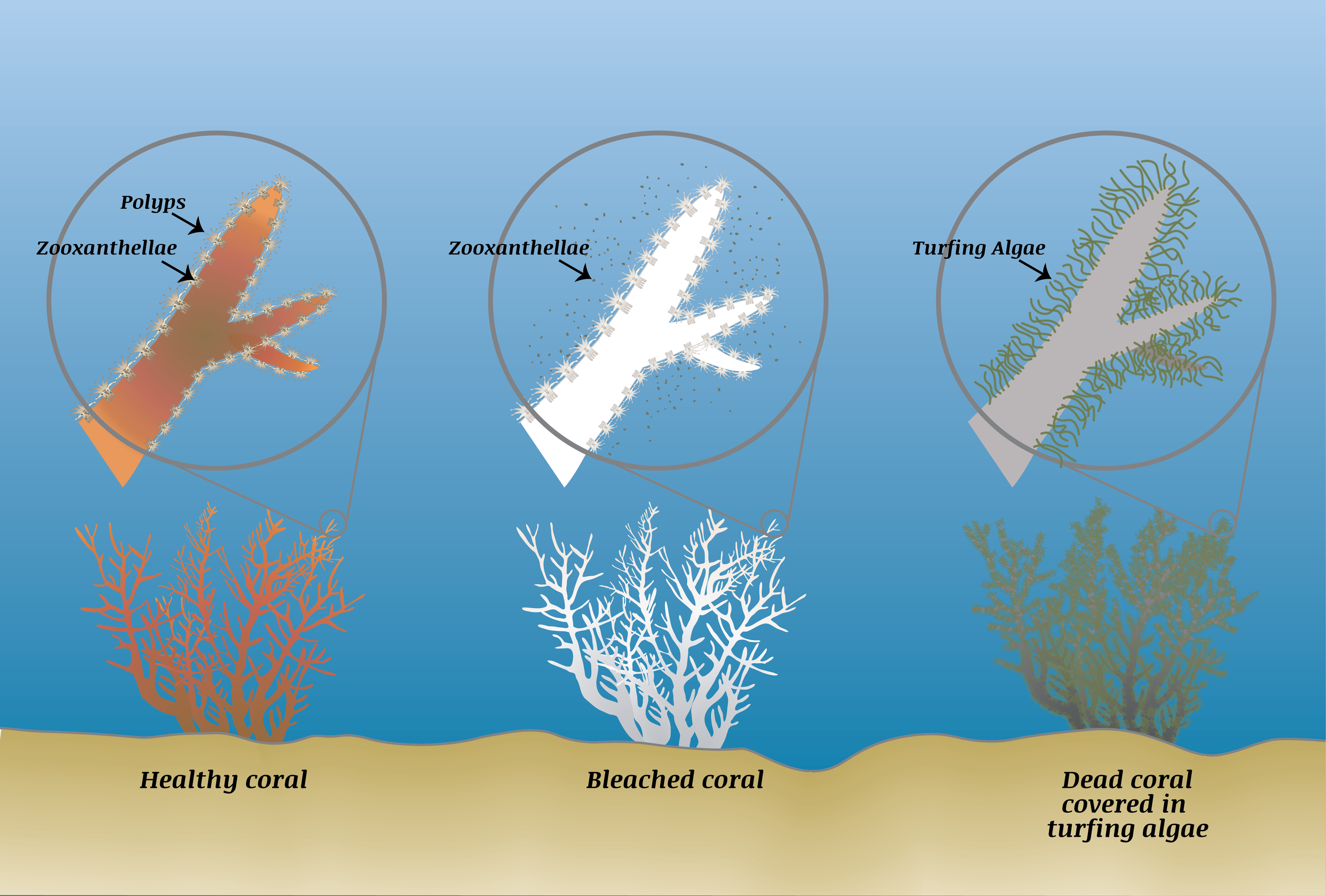What is Coral Bleaching?
Bleaching is coral’s stress response to thermal changes beyond its tolerance range. During different times of the year most corals are exposed to temperatures within a certain range. In warmer months most corals are exposed to temperatures which sit on the upper end of their thermal tolerance. As the temperature increases, so do the metabolic rates of the coral and its symbiotic algae, zooxanthellae. Under normal conditions the photosynthetic zooxanthellae use the vast products of the coral (inorganic nitrogen and phosphorus) and convert these to sugars and proteins. These are then consumed by the corals allowing them to grow, reproduce and lay down their carbonate skeletons. One of the byproducts of this process is oxygen. When water temperatures exceed the corals’ threshold an uncontrolled rate of reaction occurs. Excess oxygen develops forming highly reactive oxygen radical molecules which cause damage to the coral tissues. When this occurs the zooxnthelae living within the coral tissue is expelled into the surrounding water. This can be seen as coral becomes lighter as the colourful zooxanthelae algae leaves until the coral becomes completely transparent – making the white skeleton visible.
Without the symbiotic zooxanthelae living in the coral’s tissues, it has significantly reduced ability to acquire energy for metabolic functions. Coral polyps are only able to filter-feed using their tentacles. The reduced amount of food usually causes the coral animal to starve – shutting down bodily functions such as immune system defense, mucus production, growth and tissue repair. If conditions improve the coral can recover, however usually the coral begins to die.
Occasional annomolies in sea surface temperatures are normal and therefore large-scale bleaching events have happened at numerous times throughout history. However in recent history climate change is causing increased frequency of these mass bleaching events. The unprecedented 2016-2017 bleaching event in the Pacific and Indian Oceans caused coral mortality rates between 20-90% in most reefs across this massive region.
Learn more about coral health and how to conduct coral bleaching surveys in our CoralWatch survey course:


